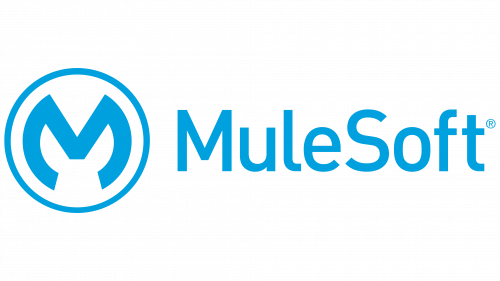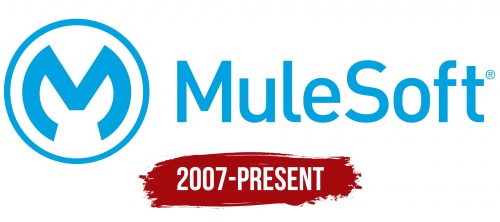The MuleSoft logo stands out for its originality and reflects the creative potential of the company’s founders. This symbol highlights a unique approach to solutions and is closely tied to the theme of cloud technologies, embodying modernity and innovation. The emblem expresses the company’s ambition to extend its services to all corners of the globe, demonstrating the global scale of its vision.
MuleSoft: Brand overview
The history of MuleSoft began in 2006 when Ross Mason founded the company in San Francisco, California. With his background in corporate application integration, Mason recognized that existing solutions were expensive and complex. He aimed to create a simpler, more efficient way to integrate various applications and systems. The name “MuleSoft” symbolizes the company’s goal of building a strong and reliable platform capable of doing the “heavy lifting” for integration tasks.
In its early days, the company focused on developing Mule, an open-source enterprise service bus. This approach quickly attracted developers and fostered a strong community around the product. A breakthrough came in 2007 with the launch of the first version of Mule ESB. Developers embraced the product for its flexibility and ease of use, attracting enterprise customers looking for alternatives to traditional, more expensive integration solutions.
In 2009, the company received a $4 million investment from Hummer Winblad Venture Partners, which helped expand marketing efforts and grow its development team. Significant growth followed in 2010 and 2011 with the launch of Mule iON, an integration platform as a service (iPaaS). This new offering enabled customers to integrate cloud services and applications.
By 2013, the company secured $37 million in Series E funding, which was used to expand globally with offices in Europe and Asia. In 2014, a major leap forward occurred with the release of its flagship product, the Anypoint Platform. This unified integration solution became the core offering, providing a comprehensive suite of tools for integrating applications, data, and devices.
Continued rapid growth was fueled by raising $128 million in 2015 at a $1.5 billion valuation, allowing the company to expand its global reach and enhance the Anypoint Platform’s capabilities. A landmark year came in 2017 with a successful New York Stock Exchange IPO, cementing the company’s leadership in integration technology.
In 2018, Salesforce acquired the firm for $6.5 billion, one of the largest acquisitions in Salesforce’s history. Despite the acquisition, the platform retained high operational independence, continuing to develop its core offerings while integrating with Salesforce’s ecosystem.
The focus on innovation continued into 2019 and 2020, with efforts directed toward API management and IoT device integration. In 2021, a new tool, Composer, was released to make integration accessible to business users without technical expertise.
By 2023, the company had firmly established its role within Salesforce’s broader strategy, providing a unified platform for digital business transformation. MuleSoft collaborates with brands like Coca-Cola, MasterCard, Airbnb, Toyota, Cisco, Audi, Barclays, Netflix, etc. The company enables these industry leaders to streamline their systems, enhance customer experiences, and achieve seamless digital transformations by connecting applications, data, and devices. The evolution from a small startup to a key player in integration technology highlights how innovation, transparency, and developer-focused solutions can lead to success in solving complex technical challenges.
Meaning and History
What is MuleSoft?
This platform operates as an electronic nerve center for businesses. It provides solutions that allow seamless connection of various databases, programs, and APIs, regardless of the technology used. One of the platform’s key features is its ability to connect cloud, on-premises, and hybrid systems, helping companies build networks of interconnected data and applications. Its products are in demand across various sectors, such as healthcare and retail, helping businesses transform IT costs into flexible ecosystems that drive innovation and growth.
2007 – today
The MuleSoft logo is simple and deeply symbolic, reflecting the brand’s key ideas of integration and reliability. The emblem is designed in the shape of a circle, which is associated with completeness and wholeness. Inside the circle is a stylized letter “M,” whose curves form the silhouette of a mule—a symbol of endurance and hard work, perfectly capturing the company’s nature of business.
The curves of the letter “M” inside the logo suggest the process of integration—MuleSoft’s primary focus is on connecting different systems and applications to function within a unified environment. These smooth lines visually represent the essence of the company’s software—the ability to bring diverse elements together, ensuring they work harmoniously.
Blue is traditionally associated with technology and cloud solutions, highlighting the company’s field of activity. It is a color of calmness and trust, implying the reliability and ability of the company’s developer solutions to function without failure, even under the most challenging conditions.
The font used in the company name is sans-serif, simple, and minimalist. This emphasizes the technological and modern aspects, giving a sense of stability and professionalism. The visual mark avoids unnecessary elements—focusing on the core: the integration of technologies and the reliability of services.
The MuleSoft emblem visually underscores the company’s primary mission—to integrate systems and platforms so that users can confidently rely on the stable performance of their technologies.





